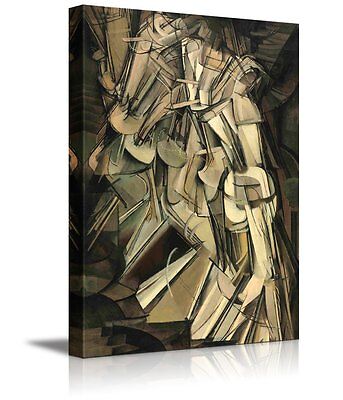Duchamp Descending Staircase

The concept of a “Duchamp Descending Staircase” might seem intriguing, as it could evoke the idea of the renowned artist Marcel Duchamp and his iconic work “Nude Descending a Staircase, No. 2.” This painting, which was showcased at the Armory Show in New York in 1913, caused a considerable stir due to its unconventional representation of a nude figure in a Cubo-Futurist style, capturing the movement of the figure as it descends a staircase through a series of overlapping images.
Duchamp’s work was a pioneering piece in the development of modern art, challenging traditional notions of representation and pushing the boundaries of what was considered “art” at the time. By depicting the nude figure in a state of motion, Duchamp referenced the photographic experiments of Étienne-Jules Marey and Eadweard Muybridge, who used sequential photography to study movement. This innovative approach not only reflected the technological advancements and fascinations of the era but also signaled a significant shift in the way artists perceived and represented reality.
The idea of “descending” in Duchamp’s piece can be interpreted on multiple levels. Physically, it represents the movement of the figure down the stairs, a sequence of actions captured in a single, static image. Symbolically, it might suggest a descent into the chaos of modern life, where traditional forms and values were being constantly challenged and redefined. The staircase, a common element in many architectural settings, becomes a metaphor for transition, transformation, and the fragmentation of time and space.
In a broader context, the concept of a “Duchamp Descending Staircase” could be seen as a reflection of the artist’s own descent into the world of conceptual art, where the physical object became less important than the idea or concept it represented. Duchamp’s later works, such as his readymades—found objects presented as art—further pushed the boundaries of what constituted a work of art, challenging the viewer’s perceptions and forcing a reevaluation of the role of the artist, the artwork, and the observer in the creative process.
To delve deeper into the significance of Duchamp’s work and its implications for modern and contemporary art, it’s essential to consider the historical context in which it was created. The early 20th century was a period of rapid change, marked by technological advancements, political upheaval, and a general sense of disillusionment with traditional values. Artists like Duchamp, along with others associated with the Dada movement, responded to this environment by questioning the very foundations of art and reality.
The Dada movement, with its emphasis on the irrational, the absurd, and the rejection of traditional aesthetics, provided a fertile ground for Duchamp’s experiments. His readymades, for instance, challenged the notion of what could be considered a work of art, suggesting that the creative act was not about the physical crafting of an object but about the idea or concept behind it. This conceptual turn in art has had a lasting impact, influencing generations of artists to rethink the relationship between the artwork, the artist, and the viewer.
In conclusion, the notion of a “Duchamp Descending Staircase” serves as a poignant reminder of the artist’s groundbreaking contribution to modern art. By challenging traditional representations of time, space, and the human form, Duchamp paved the way for a wide range of avant-garde movements, from Surrealism to conceptual and installation art. His legacy continues to inspire artists, curators, and theorists, ensuring that the “descent” down the staircase of innovation remains an ongoing and dynamic process.
Frequently Asked Questions

What was the significance of “Nude Descending a Staircase, No. 2” in the context of modern art?
+“Nude Descending a Staircase, No. 2” was significant because it introduced a new way of representing movement and time in a static image, influenced by Cubo-Futurist principles and photographic experiments. It challenged traditional notions of representation and contributed to the development of modern art.
How did Marcel Duchamp’s readymades impact the concept of art?
+Duchamp’s readymades, such as “Fountain,” dramatically expanded the definition of what could be considered art. By presenting found objects as artworks, Duchamp shifted the focus from the physical creation of an object to the idea or concept behind it, fundamentally changing the way artists and viewers think about art.
What is the relationship between Duchamp’s work and the Dada movement?
+Marcel Duchamp was closely associated with the Dada movement, which emerged during World War I. Dada’s rejection of traditional aesthetics and its embrace of the irrational and the absurd provided a context for Duchamp’s innovative and provocative works, including his readymades, which challenged conventional notions of art and reality.